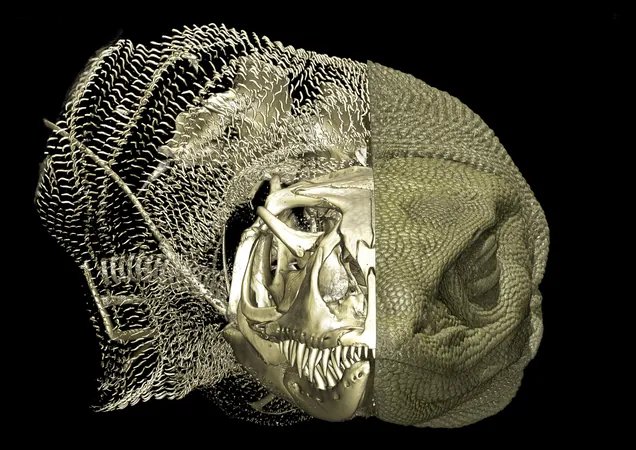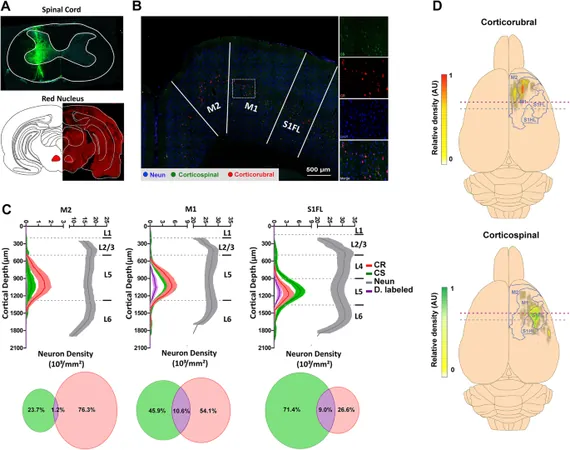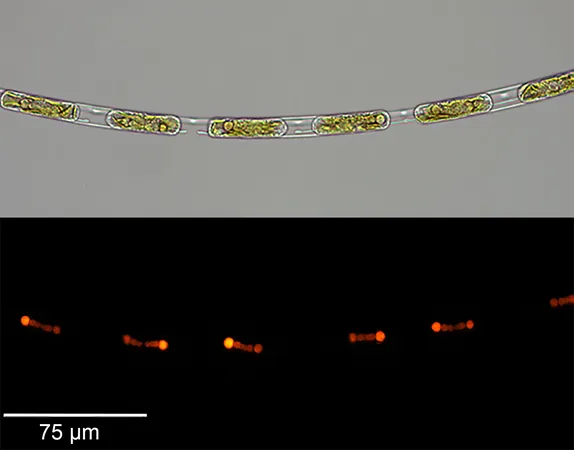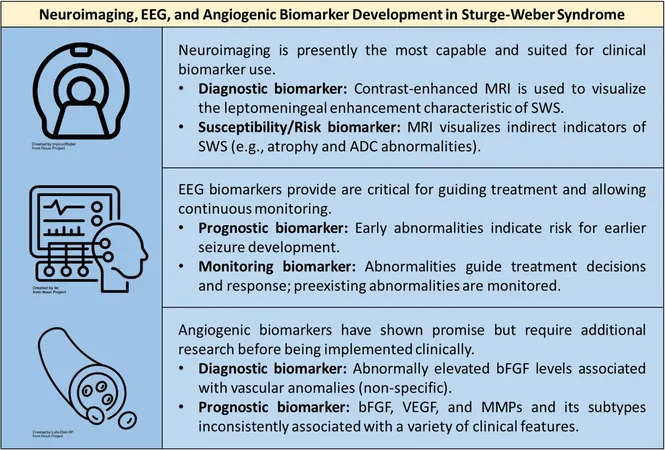
Unlocking the Secrets of Australia's Monitor Lizards: Surprising Discoveries Beneath Their Scales
2025-07-21
Author: Yu
Beneath the rugged scales of Australia's legendary monitor lizards, commonly referred to as goannas, researchers have stumbled upon an astonishing revelation: a hidden layer of bony structures known as osteoderms. This groundbreaking discovery could illuminate how these ancient reptiles not only survived but thrived in one of the planet's most unforgiving environments.
Published in the prestigious Zoological Journal of the Linnean Society, this landmark study marks the first extensive exploration of osteoderms in lizards and snakes. An international team of scientists from Australia, Europe, and the U.S. employed cutting-edge micro-CT scanning technology to analyze nearly 2,000 reptile specimens from renowned museum collections, including those at Museums Victoria's Research Institute.
"We were amazed to uncover osteoderms in 29 species of Australo-Papuan monitor lizards that had never been documented before," remarked Roy Ebel, lead author and prominent researcher at Museums Victoria Research Institute and the Australian National University. This revelation represents a staggering fivefold increase in known cases among goannas.
While osteoderms are most commonly identified in crocodiles, armadillos, and even some dinosaurs like the Stegosaurus, their evolutionary purpose has long remained a mystery. New theories propose that these structures may not only serve as protective armor but could also play vital roles in regulating heat, facilitating movement, and storing calcium during reproduction.
This fresh research indicates that osteoderms are much more prevalent in lizards than previously assumed, appearing in nearly half of all lizard species globally—an astonishing 85% increase from earlier estimates.
The crux of this discovery lies in the valuable resources housed in museum collections. Institutions like the Museums Victoria Research Institute are crucial for preserving biodiversity, enabling scientists to glean insights from specimens long after they were collected.
Many of the analyzed specimens were decades old, some even exceeding 120 years, yet thanks to advanced imaging technologies, researchers could unearth new findings without damaging the original materials. These collections serve not only as storied archives but as dynamic tools for transformative scientific exploration.
"What's thrilling about this discovery is that it fundamentally changes our understanding of reptile evolution," stated Dr. Jane Melville, Senior Curator of Terrestrial Vertebrates at Museums Victoria Research Institute. "It implies that these bony structures may have emerged as a response to environmental challenges as lizards adapted to the unique landscapes of Australia."
Previously, osteoderms in monitor lizards were deemed rare and mostly associated with the infamous Komodo dragon. However, the newfound revelation of their widespread presence among Australo-Papuan goannas generates compelling questions about how these reptiles have adapted, survived, and evolved across the continent.
This pivotal research not only redefines the narrative surrounding Australia's goannas but also provides a vital new dataset for examining how skin, structure, and survival have coalesced over millions of years in the evolutionary saga.



 Brasil (PT)
Brasil (PT)
 Canada (EN)
Canada (EN)
 Chile (ES)
Chile (ES)
 Česko (CS)
Česko (CS)
 대한민국 (KO)
대한민국 (KO)
 España (ES)
España (ES)
 France (FR)
France (FR)
 Hong Kong (EN)
Hong Kong (EN)
 Italia (IT)
Italia (IT)
 日本 (JA)
日本 (JA)
 Magyarország (HU)
Magyarország (HU)
 Norge (NO)
Norge (NO)
 Polska (PL)
Polska (PL)
 Schweiz (DE)
Schweiz (DE)
 Singapore (EN)
Singapore (EN)
 Sverige (SV)
Sverige (SV)
 Suomi (FI)
Suomi (FI)
 Türkiye (TR)
Türkiye (TR)
 الإمارات العربية المتحدة (AR)
الإمارات العربية المتحدة (AR)